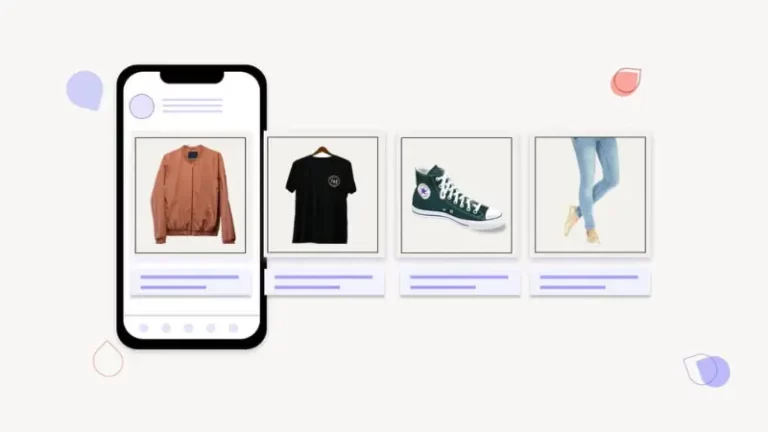Facebook Dynamic Creative Adset (DCA) is a modern method for running ad campaigns that helps advertisers optimize performance intelligently and automatically like never before. If you are a business owner looking to increase sales or an agency owner managing multiple client accounts, this is definitely knowledge you shouldn’t overlook. This method allows Facebook to automatically combine ad elements such as images, headlines, copy, and Call-to-Action (CTA) buttons to determine which version delivers the best results. In other words, DCA helps you save time on manual testing while increasing the likelihood of reaching the right audience.
Of course, Dynamic Creative also has its own limitations that we need to understand before deployment. In this article, Optimal Agency will explore with you the detailed setup process for Facebook dynamic ads to help your campaign achieve maximum effectiveness.
What are Facebook dynamic ads?
If you are an advertiser, business owner, or marketer looking to optimize ad effectiveness without spending too much time on testing, Facebook Dynamic Creative (dynamic ads) is a tool you can’t ignore. This is a smart feature within the Ad Set that allows us to automatically test and combine various creative elements to find the most effective ad version for each user segment. When you enable Dynamic Creative, you can provide Facebook with multiple content variations for the system to automatically mix and display. Specifically:

- Up to 10 images or videos: For example, you can upload a product showcase video, a short customer testimonial video, and a few lifestyle images for Facebook to automatically choose to display based on viewer behavior.
- Up to 5 Primary Texts: This is the main body copy of the ad. You can test different writing styles—such as emphasizing the customer’s pain point (“Are you struggling to find the right product?”) or aiming for positive emotion (“Thousands of customers changed their habits after just 1 week of trial”).
- 5 Headlines: For example, “50% Off Today Only!” or “Discover This Month’s Bestseller.”
- Other supplementary elements like Call to Action (CTA) and Description: You can test different CTAs like “Shop Now,” “Learn More,” or “Sign Up” to see which is the most effective call to action.
After you input these variations, Facebook will automatically try many different combinations of images, videos, headlines, and body copy, then display them to individual viewers based on their behavior and interests.
Example:
- One person might see Image A + Primary Text 1 + Headline X.
- While another sees Video B + Primary Text 3 + Headline Y.
All combinations are automatically optimized by Facebook to determine which combination generates the most clicks, conversions, or sales.
Facebook Dynamic Ads deliver unexpected benefits
When we—those who run Facebook advertising—look for ways to optimize campaign performance, Dynamic Creative Ads (DCA) truly become a game-changer. It helps advertisers like us automate, save time, and maximize efficiency while maintaining creativity in every displayed content piece.
Automating Creative Testing
Previously, if you wanted to test 5 different images and 5 pieces of copy, you had to manually create dozens of ads—taking a lot of time to manage and analyze. But with Dynamic Creative, you only need to input all the content into one ad, and Facebook will automatically combine, distribute, and measure the effectiveness of each combination.
Example: If you are running an ad for a fashion brand, just upload 10 product images, 5 engaging headlines, and 5 descriptions. Facebook will automatically test different combinations to determine the “golden formula”—for instance, Model Image A with the headline “Fall-Winter Collection 30% Off” delivers the highest conversion rate.
Higher performance through optimal Creative Combination
Facebook can analyze user behavior and continuously learn from data. When running Dynamic Ads, the system will automatically swap components like images, headlines, and CTAs to find the best-performing creative combination for each audience.
Example: A customer who prefers watching videos will likely see the video format + “Watch Now” CTA, while another customer with quick shopping tendencies might see a static image + “Shop Now” CTA. Thanks to this mechanism, the ad automatically personalizes the user experience, leading to a significant increase in Click-Through Rate (CTR) and sales.
Providing detailed, Data-Driven Insights
One of the strongest points of Dynamic Ads is the ability to report on each element in detail. You can easily see:

- Which image attracts the most clicks?
- Which piece of copy makes users pause longer?
- Or which headline generates the most orders?
This gives you a factual data foundation to adjust content in subsequent campaigns. We often rely on this data to identify the “best performer” ad copy and reuse it at a larger scale.
Reducing workload
Instead of having to create a multitude of separate Ad Sets to test each element, you can now consolidate all your ideas into a single campaign. This not only saves time but also helps reduce the risk of errors in campaign setup.
For example, with a cosmetics client, we previously had to create over 40 ad variations just to test different images and content. But when we switched to Dynamic Creative, the entire process was streamlined down to just 1 campaign—with performance still 25% higher than before.
Practical strategy: Maintaining performance and avoiding “ad fatigue”
I personally often use Dynamic Creative Ads for my e-commerce campaigns or those of my clients as follows:
- Create one DCA campaign for Facebook to automatically test variations.
- After a period, I analyze the data and select the top 3 best-performing ads.
- Then, I duplicate these effective ads and replace the 3 poorest-performing ones.
This process helps us maintain stable performance over a long period while simultaneously avoiding “ad fatigue,” where users see the same ad variation too many times, causing effectiveness to drop.
Facebook dynamic ads best practices
When we talk about Dynamic Creative Ads, everyone agrees that it is an excellent tool for optimizing ad effectiveness thanks to its ability to automatically test hundreds of different creative variations. However, simply turning the feature on doesn’t guarantee good results. For Facebook to truly “understand” and distribute ads effectively, you need to adhere to certain principles and best practices that we have summarized below after years of running actual campaigns for hundreds of brands.

Quality over quantity
Although Facebook allows us to add up to 10 images or videos, along with 5 body copies and 5 headlines, “stuffing” too much content often makes the system difficult to optimize and the data dilute.
We always advise you to only choose 3–4 images/videos, 3 primary texts, and 3 headlines as sufficient.
Example: When running a campaign for a cosmetics brand, we only used three videos:
- A product usage tutorial video,
- A customer feedback video,
- And a lifestyle video expressing the brand’s style.
The results showed performance was 30% better than when using 10 random videos.
Maintain content consistency
When Facebook automatically combines elements (image, video, text), they must be consistent in theme and message.
Example: If you are advertising athletic shoes, ensure:
- All images and videos are related to shoes,
- The text and headlines also revolve around product benefits, such as “Run smoother, last longer every day.”
Otherwise, the system might pair a shoe image with a headline about clothing, creating illogical and ineffective content.
Diversify content for learning
Facebook learns from data, so provide it with truly different variations so the system can draw clear insights.
For instance, you could test:
- A short and concise description,
- A long, detailed piece that tells the brand story,
- A testimonial piece, quoting real customer feedback.
After running for a while, you will realize whether your users respond better to an emotional story or a direct offer—that is valuable data for future campaigns.
Video often outperforms images
In our experience, video consistently has a higher engagement and conversion rate than static images.
If you don’t have professional video, don’t worry—you can easily create simple videos from static images by adding motion effects, dynamic text (typing effect), or lively emojis.
Example: A fashion brand merely created a slideshow from 5 product images with light background music and saw a 40% increase in CTR compared to using single images.
Focus on the “Hook” – the first 3 seconds of the video
The first three seconds are the “golden moment” that determines whether the viewer stays or scrolls past.
If your ad is underperforming, re-examine the opening:
- Is it intriguing?
- Does it present the problem immediately?
- Does it make the viewer want to keep watching?
Furthermore, since the majority of viewers watch with the sound off, you need to:
- Add automatic subtitles,
- Use light background music,
- Ensure the content is still easy to understand without sound.
Example: An opening like “Are you facing this problem every morning?” accompanied by vivid imagery will be significantly more effective than a dull opening.
Optimize for mobile display
Since the majority of Facebook users view ads on their phones, you should prioritize the vertical format (9:16). However, ensure the main content (faces, products, text) remains within the safe zone of 4:5 to avoid being cut off when the ad displays in various placements like the News Feed, Stories, or Reels.
Example: We once encountered a case where a brand’s logo was cut off when running a vertical ad, significantly reducing brand recognition—a small design flaw but with a major impact.
Monitor results with Pixel and Conversion API
To know which ads truly drive conversions, you need to accurately track user behavior data. Install the Facebook Pixel on your website to track events (product view, add to cart, purchase). Simultaneously, set up the Conversion API to send data from the server, helping you avoid data loss when users block cookies.
For instance, in one e-commerce campaign, when we combined the Pixel and CAPI, the order recording rate increased by over 20% compared to using the Pixel alone. Don’t let valuable data be missed, as accurate measurement is the key to optimizing dynamic ad effectiveness.
Facebook dynamic ads are a powerful tool that helps advertisers optimize performance and effectively scale campaigns. However, to achieve the best results, you need to focus on content quality, consistency, testing capabilities, and accurate measurement. When applying the correct practices above, your ad campaigns will not only attract viewers but also deliver high conversion rates and sustainable profit for the business.
Frequently Asked Questions
This ad format is particularly beneficial for businesses with extensive websites or large ad inventory. If your business aims to maximize results through Facebook marketing, Dynamic Ads are the right choice. Dynamic Ads help advertisers deliver the product message to the right audience at the right time. This is the best Facebook advertising strategy for e-commerce businesses.
The Facebook ad formats used in Dynamic Ad campaigns include: image, carousel, and collection. Dynamic Ads are similar in appearance to standard Facebook Ads. For this ad type, the product imagery is a determining factor in the campaign’s success. You need to ensure your products are central to the dynamic campaign with visual appeal and are represented correctly.